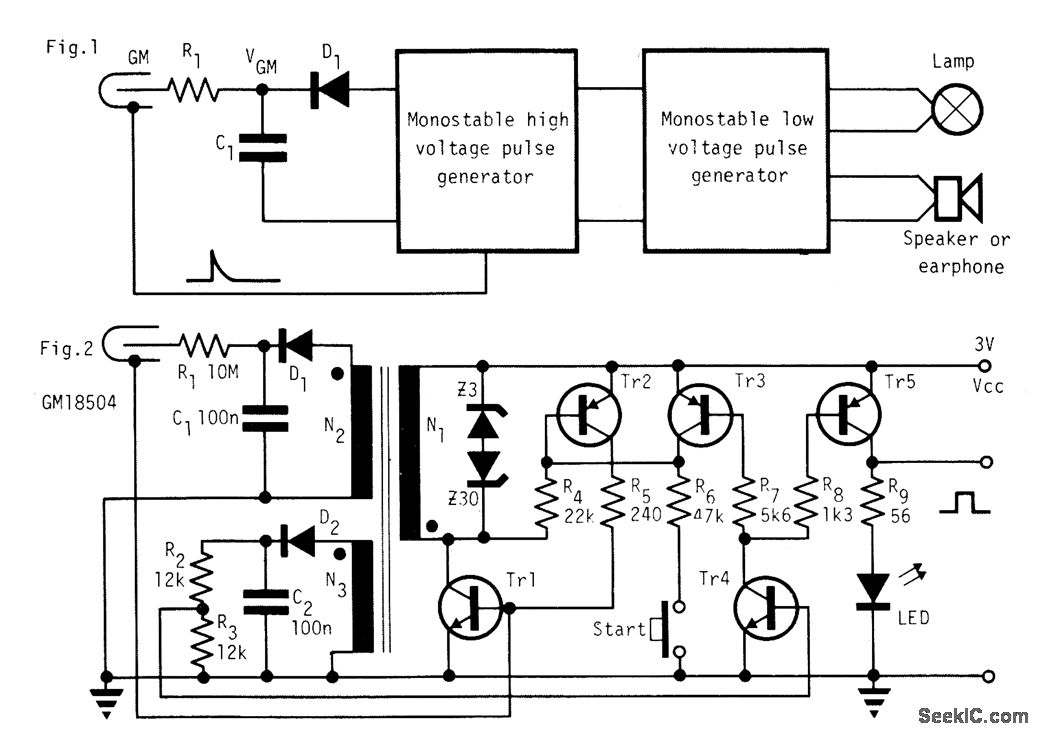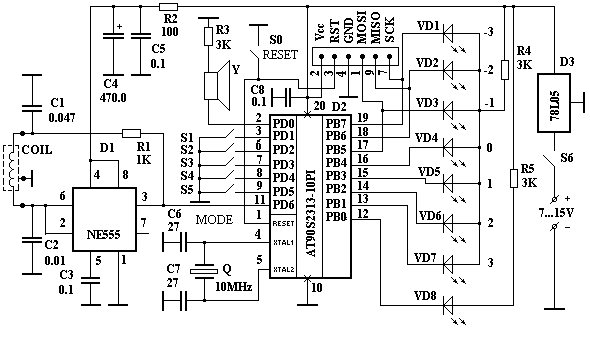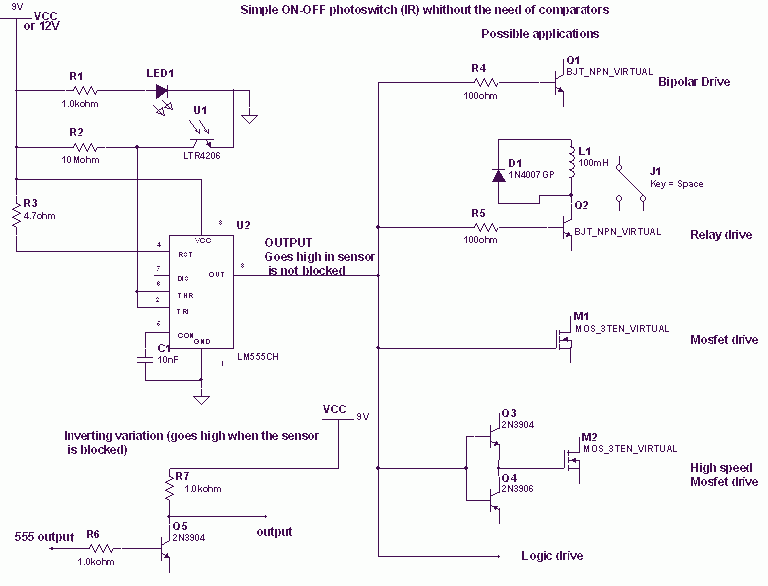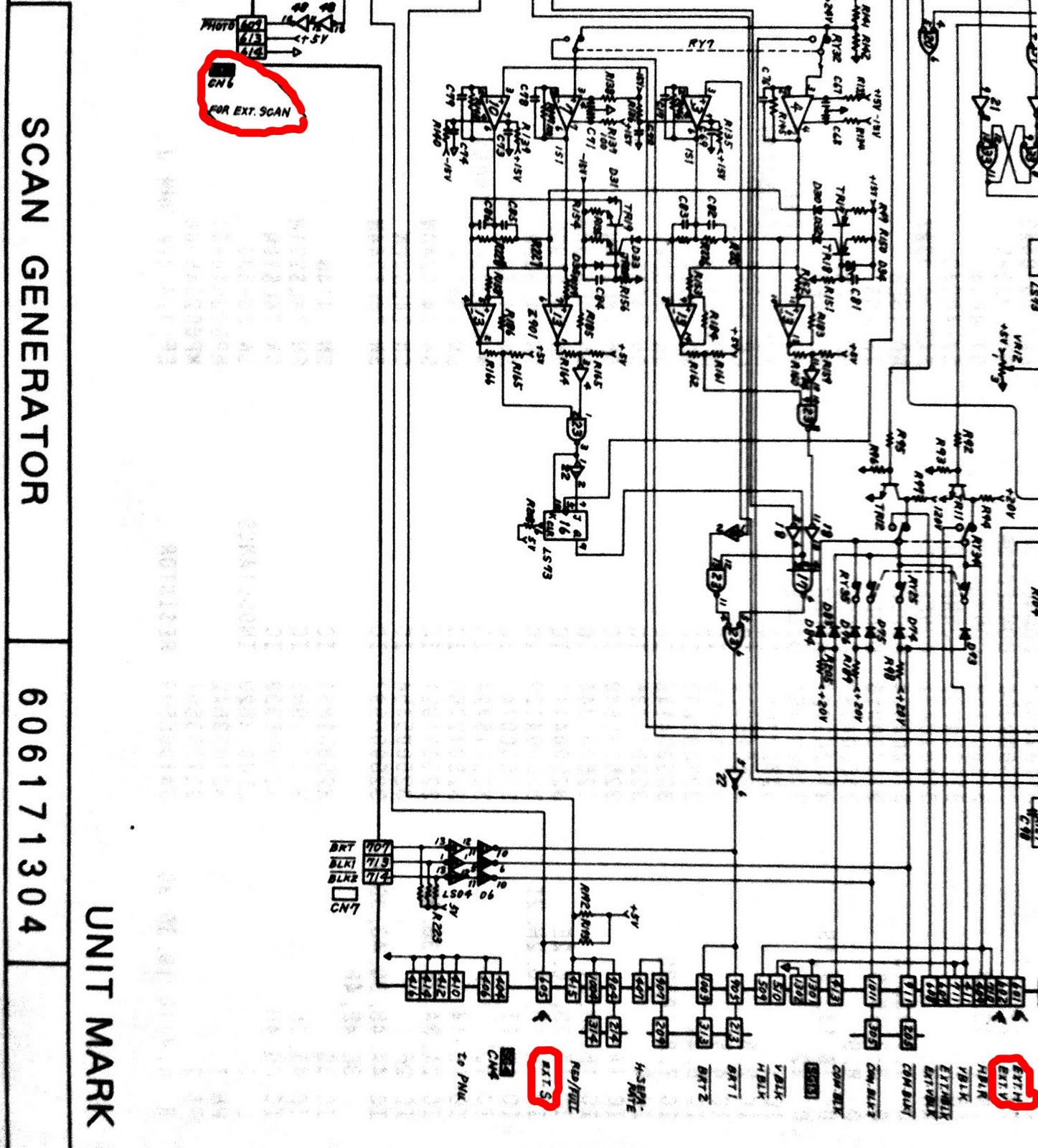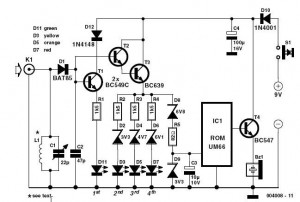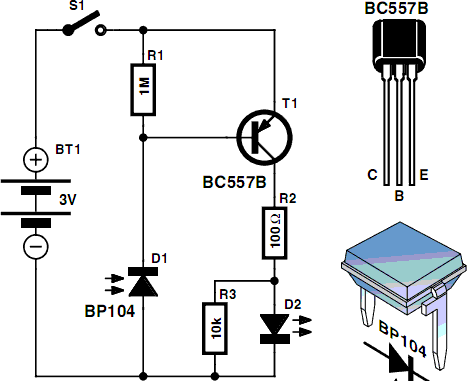
Metal detector with CS209A
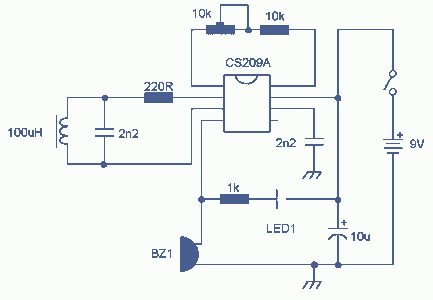
A single chip metal detector with a range of a few inches. This is useful for detecting nails or screws in walls and floors, or for locating buried mains cable. The heart of the circuit is a single IC, the CS209A made by Cherry Semiconductor. The detector is a single 100uH choke. The IC has an integral oscillator; the choke forms part of an external LC circuit, its inductance being altered by the proximity of metal objects. It is the change in oscillation that is amplified and demodulated. LED 1 will light and the buzzer will sound when the choke changes inductance. Setup is easy; VR1 is adjusted with the choke away from any metal source so that the LED lights and the buzzer sounds. The control is backed off so that the LED goes out and the buzzer stops. Now when the choke comes into contact with any metal object that alters its inductance, LED 1 and the buzzer will activate.
The circuit design of the metal detector centers around the CS209A integrated circuit, which incorporates an oscillator that generates a frequency determined by the LC circuit formed by the choke (100uH) and an external capacitor. This arrangement allows the circuit to operate effectively within a range of a few inches, making it suitable for detecting metallic objects like nails, screws, or buried cables.
The choke's inductance is the key to the detector's functionality; it changes in response to the proximity of metallic objects. When metal is nearby, the inductance of the choke alters, leading to a change in the oscillation frequency of the circuit. This change is detected by the CS209A, which amplifies the signal and demodulates it to trigger the output devices.
The output stage of the circuit includes a light-emitting diode (LED 1) and a buzzer, both of which serve as indicators of metal detection. When the circuit senses a change in the choke's inductance due to the presence of metal, the CS209A activates these components, providing both visual and auditory alerts.
Calibration of the circuit is straightforward. It involves adjusting the variable resistor (VR1) while ensuring that the choke is positioned away from any metal sources. This initial setup allows the LED to illuminate and the buzzer to sound, indicating that the circuit is responsive. Once the adjustment is made, the control can be backed off until the LED and buzzer deactivate, creating a baseline state. The detector is then ready for use; any subsequent interaction with metal objects will reactivate the LED and buzzer, confirming the presence of metal.
Overall, the design emphasizes simplicity and effectiveness, making it a practical solution for users needing to locate metal objects in various environments.A single chip metal detecor with a range of a few inches. This is useful for decting nails or screws in walls and floors, or for locating buried mains cable. The heart of the circuit is a single IC the CS209A made by Cherry Semiconductor. The detector, is a single 100uH choke. The IC has an integral oscillatorm the choke forms part of an external LC circuit, its inductance being altered by the proximity of metal objects. It is the change in oscillation that is amplified and demodulated. Led 1 will light and the buzzer will sound when the choke change sinductance. Set up is easy, VR1 is adjusted with the cjoke away from any metal source so that the LED lights and buzzer sounds.
The control is backed off so that the LED goes out and buzzer stops. Now when the choke comes into contact with any metal object that alters its inductance, LED 1 and the buzzer will activate. 🔗 External reference
The circuit design of the metal detector centers around the CS209A integrated circuit, which incorporates an oscillator that generates a frequency determined by the LC circuit formed by the choke (100uH) and an external capacitor. This arrangement allows the circuit to operate effectively within a range of a few inches, making it suitable for detecting metallic objects like nails, screws, or buried cables.
The choke's inductance is the key to the detector's functionality; it changes in response to the proximity of metallic objects. When metal is nearby, the inductance of the choke alters, leading to a change in the oscillation frequency of the circuit. This change is detected by the CS209A, which amplifies the signal and demodulates it to trigger the output devices.
The output stage of the circuit includes a light-emitting diode (LED 1) and a buzzer, both of which serve as indicators of metal detection. When the circuit senses a change in the choke's inductance due to the presence of metal, the CS209A activates these components, providing both visual and auditory alerts.
Calibration of the circuit is straightforward. It involves adjusting the variable resistor (VR1) while ensuring that the choke is positioned away from any metal sources. This initial setup allows the LED to illuminate and the buzzer to sound, indicating that the circuit is responsive. Once the adjustment is made, the control can be backed off until the LED and buzzer deactivate, creating a baseline state. The detector is then ready for use; any subsequent interaction with metal objects will reactivate the LED and buzzer, confirming the presence of metal.
Overall, the design emphasizes simplicity and effectiveness, making it a practical solution for users needing to locate metal objects in various environments.A single chip metal detecor with a range of a few inches. This is useful for decting nails or screws in walls and floors, or for locating buried mains cable. The heart of the circuit is a single IC the CS209A made by Cherry Semiconductor. The detector, is a single 100uH choke. The IC has an integral oscillatorm the choke forms part of an external LC circuit, its inductance being altered by the proximity of metal objects. It is the change in oscillation that is amplified and demodulated. Led 1 will light and the buzzer will sound when the choke change sinductance. Set up is easy, VR1 is adjusted with the cjoke away from any metal source so that the LED lights and buzzer sounds.
The control is backed off so that the LED goes out and buzzer stops. Now when the choke comes into contact with any metal object that alters its inductance, LED 1 and the buzzer will activate. 🔗 External reference
